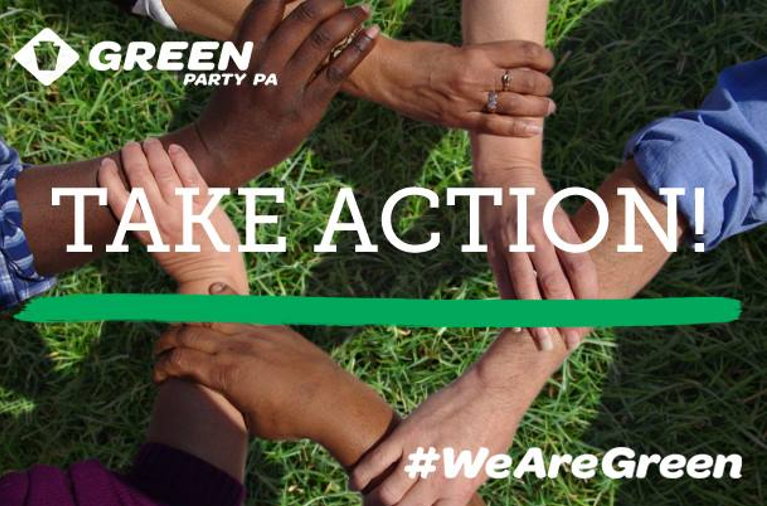The Green Party’s New Conversation: A Report from the US National Green Gathering

Photo: John Foran
I recently attended the United States Green Party’s National Gathering in Salt Lake City, Utah, along with 125 Green Party activists from across the country. This was my first time at this annual event, which unlike an official convention of the national party, is a more informal opportunity for Greens to come together to compare experiences, brainstorm, and plan for the heavy weather of the future.
Delegates came from all corners of the country, crossing the age divide (with every grey-haired Green matched by a younger version newer to the politics but every bit as engaged). The very first event was a two-hour anti-oppression workshop led by veterans who had been through a training for trainers earlier this year in Philadelphia. It was powerful and candid, with people speaking openly of very intimate pain received and given, and I felt it created a strong sense of collective trust from the get-go.
Over the next day and a half, we engaged in lively conversations, with panels devoted to elections (it was shocking to learn about the struggle of the Montana state party to gain ballot access stymied forcefully by the machinations of the Democratic Party and their unexpected allies in the American Civil Liberties Union) and to social movements from Standing Rock to solidarity with families separated on the U.S.-Mexico border. The most interesting session was the last one, on Sunday morning, which was devoted to a look at the 2016 elections and featured Green Party presidential candidate Jill Stein and David Cobb, the 2004 and 2008 candidate, a charismatic speaker who served as campaign manager for the final three months of the 2016 campaign.
Looking Back: The 2016 Elections
In 2016, the Jill Stein for president and Ajamu Baraka for vice presidential ticket received 1.44 million votes, tripling Stein’s vote count from the 2012 election, which had itself tripled the count from David Cobb’s 2008 campaign (for comparison, Ralph Nader, a progressive icon and household name in the United States but not a member of the party, received 2.8 million votes when he ran as the Green candidate for president in 2000). The 2016 vote total was 21 times more votes than any other progressive candidate received. $3.4 million was raised, mostly in small contributions, again triple the amount raised in 2012. Endorsements came from such public figures as the musician Immortal Technique, actors Viggo Mortensen and Susan Sarandon, journalist Chris Hedges, and former Greenpeace/Sea Shepherd Society ecowarrior Paul Watson.

Jill Stein at the Green Party National Gathering, 2018. Photo: John Foran.
Equally significant, Greens were on the ballot in 45 of the 51 states and territories, including Puerto Rico. All told, 89 percent of American voters had the opportunity to directly vote for a Green in 2016; in another three states, the Green ticket could be written in (the holdouts are Nevada, South Dakota, and Oklahoma). In the United States, it takes significant sums of money and person power to gather signatures for third parties to negotiate an arcane and punitive labyrinth of rules and restrictions to get ballot lines. For the Greens, there has been a steady climb upward from the relatively “low-hanging fruit” through increasingly difficult states to go from 25 states on the ballot in 2004, to 32 in 2008, and 38 in 2012. These gains are not automatically preserved from election to election, and represent hard work by dedicated activists, much of which must be undertaken anew every four years.
Immediately after the shocking election result that brought the presidency to Donald Trump on November 8, 2016, it was Jill Stein’s campaign that disputed the election results and called for recounts in key states in an attempt to shed light on the deficiencies and irregularities of the voting process, while the Democrats stood idly by. Trump’s highly visible insecurity over how legitimate his election was owes as much to Green persistence as to the shadow of Russian intervention in the election. Meanwhile, Jill Stein’s visit to Russia in the summer of 2016 at the request of democratic and environmental activists there has been smeared as an unholy deal with Putin and a Green plot, a patent absurdity that only reflects Republican and Democratic fear of any serious third party challenge to their stranglehold on the electoral process in the United States.
Looking Forward: The Paths from Here
Unfortunately, the recount effort also led to divisions between the Stein campaign and the leadership of the US National Green Party, the unfortunate consequence of which is that the momentum built by the success of the campaign in garnering votes, volunteers, and the funds needed to fight for ballot access has to this day yet to be translated into the effective sharing of those resources with grassroots Greens now running for office. Stein and Cobb were clear that this had more to do with personality differences in the party than unbridgeable policy matters, and the mood at the National Gathering, and apparently that of the new leadership of the Green Party seem to match their desire to make this happen now, in the critical times we face. Grassroots Greens know that they need to make peace in their own ranks to take on the challenges the country and the world face, from the violence of militarism to the gross inequalities of capitalism to the general lack of faith among voters everywhere (in the United States, as many as one in two potential voters don’t bother to participate in elections).
With several Green Party candidates successfully on state ballots for the 2018 mid-term elections in November, and dozens if not hundreds of candidates for offices at all levels across the country, now is the time for this reconciliation to be realized. In California, under its recent bipartisan-supported electoral reform that stipulates that only the top two vote getters of all parties combined go from the primaries to the November ballot, two Greens amazingly survived the process to achieve this (Kenneth Mejia, a 27 year-old first generation Filipino-American community organizer in in District 34 which includes downtown Los Angeles and 30 year-old Stanford Psychology Ph.D. Rodolfo Cortez Barragan in the 86 percent Latin District 40 in southeast Los Angeles). All of these candidates hope to join the ranks of the more than 1,000 Greens that have been elected to office in the United States in the party’s history (we were told that data exist that indicate that, at the local level, Greens historically have as high as a 40-45 percent chance of election, an amazing figure if it can be corroborated).
Conclusion
Electoral engagement and social movements are the twin pillars of Green activism worldwide, and individual activists tend toward one or the other, but in their hearts most Greens I know see the combination of grassroots activism and the uphill struggle to defend democracy at the ballot box, especially in the United States, as complementary identities that lend each other synergy. I agree that the political parties of the future that we desperately need will have to answer this challenge better than either parties or movements have so far, and limitations and all, the US Green Party has a history of political struggle and rich reservoirs of experience to draw on. They will be part of this global search for real justice for the world’s peoples and the planet itself going forward from here.

Photo: John Foran
Teaser photo credit: Green Party of the US Facebook page.






